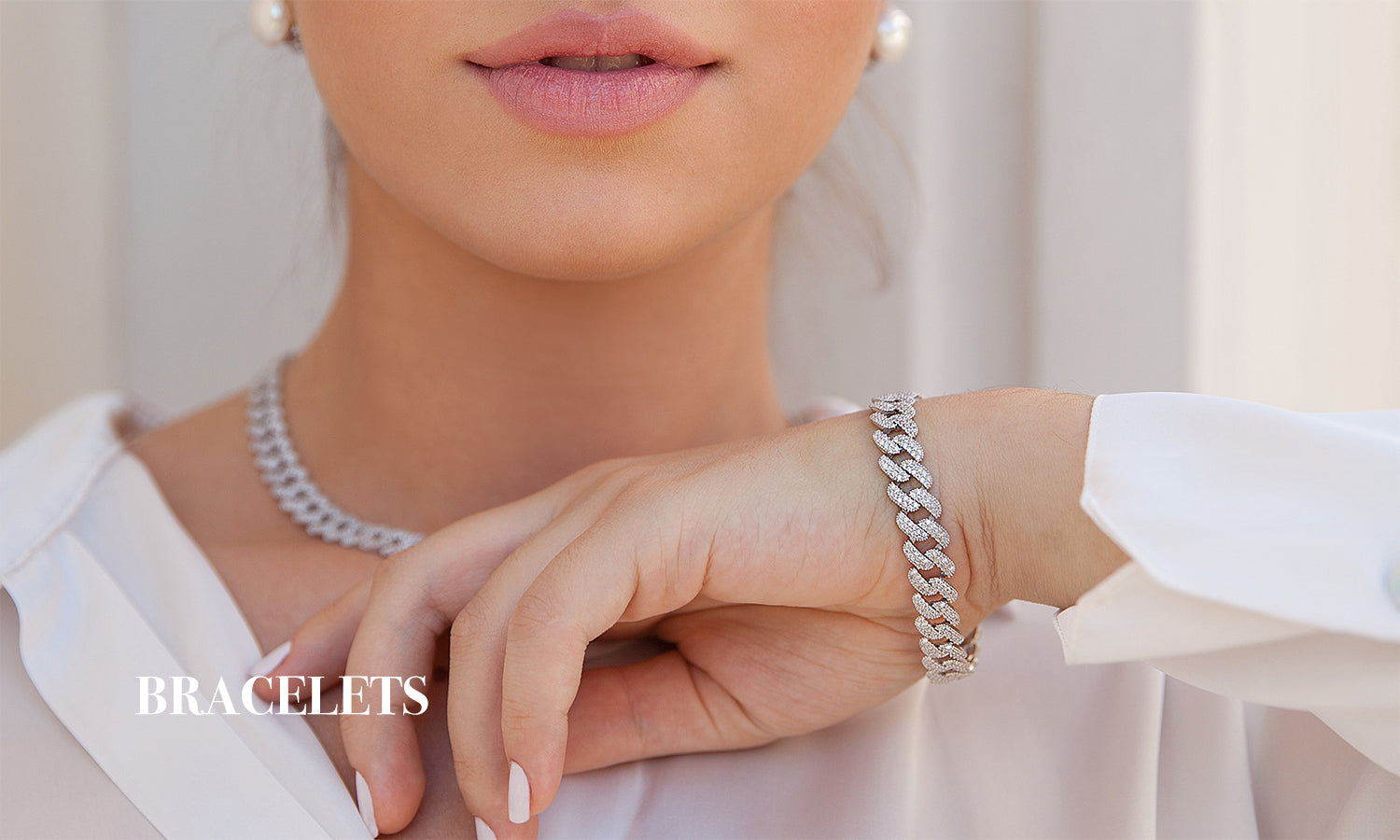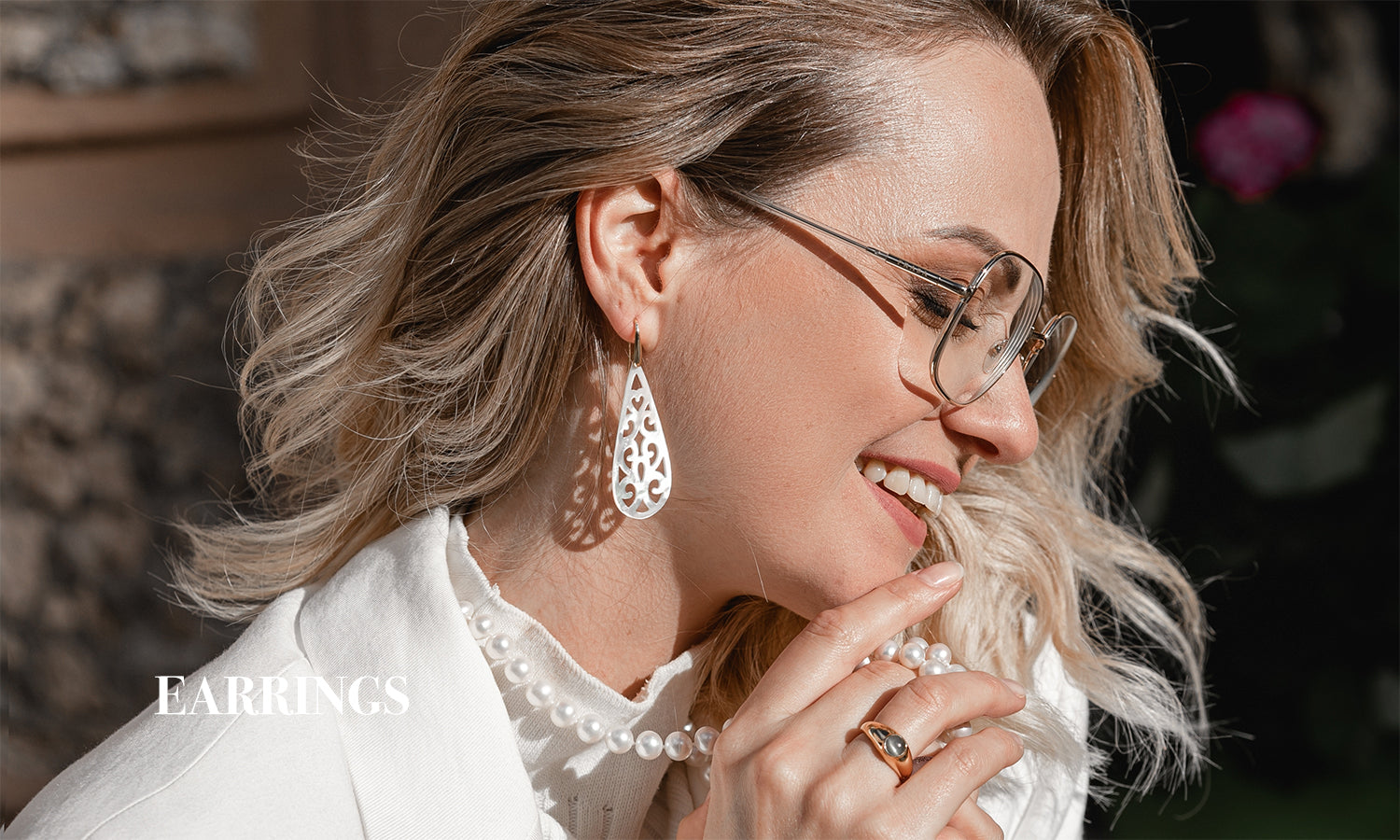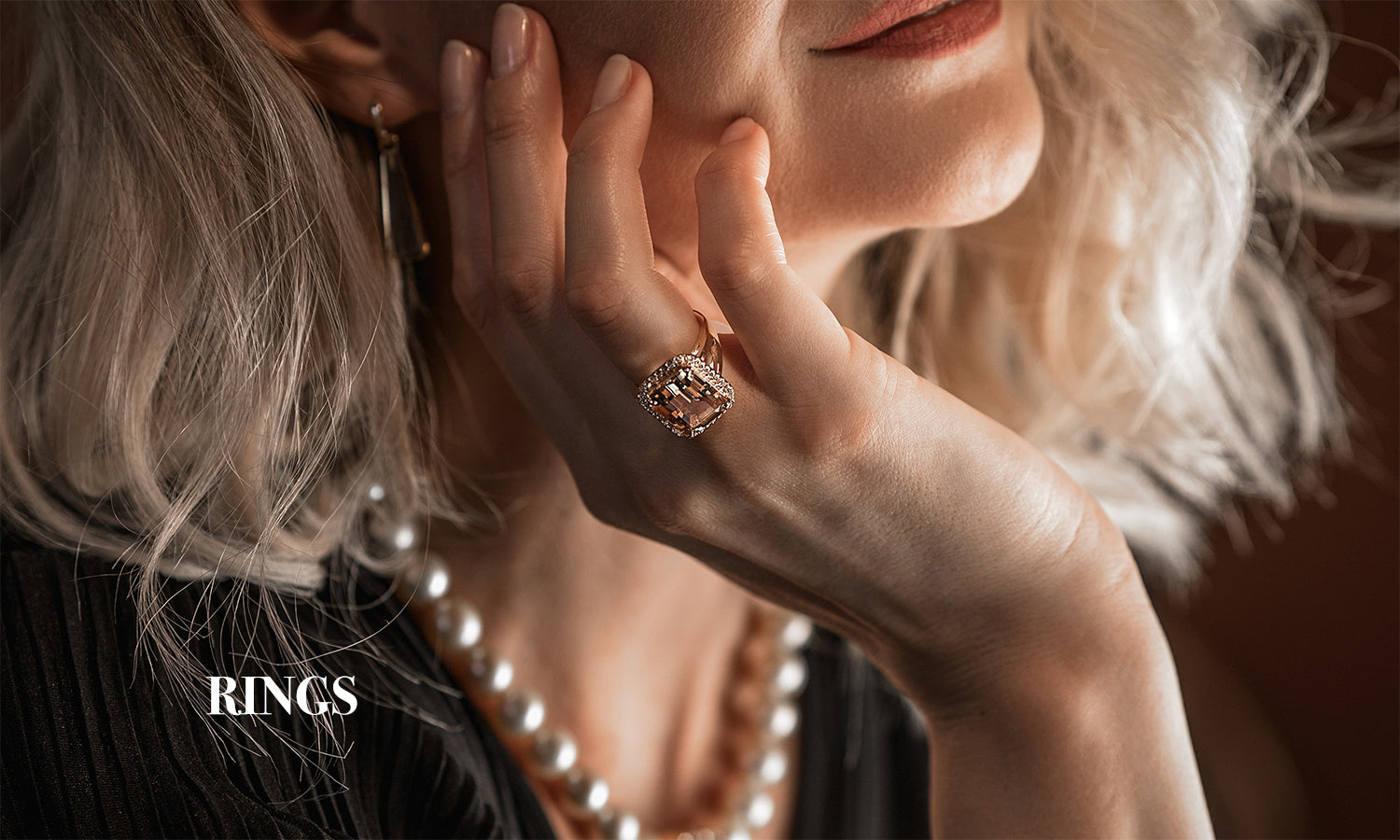
The History and Development of Art Nouveau Jewelry
Share
Origins of Art Nouveau Jewelry
Art Nouveau jewelry emerged in the late 19th Century as an artistic movement emphasizing organic and floral motifs, flowing lines, and asymmetrical shapes. It was a reaction against the rigidity of neoclassicism and the decorative arts of the time. The movement was most popular in Europe and North America, especially in Paris, known as "le style nouille" (the new style).

https://www.planderful.com/products/golden-galaxy-ear-cuff?_pos=1&_psq=ear&_ss=e&_v=1.0
The art of the Pre-Raphaelites, the Arts and Crafts movement, and Japanese art inspired the style. A focus on nature and metalwork, enameling, and the incorporation of precious and semi-precious gems characterized it.
The movement was short-lived; it began in the late 1890s and peaked by the early 1920s. However, its influence can still be seen in modern jewelry design.
Characteristics of Art Nouveau Style
- Asymmetrical shapes: Art Nouveau jewelry is characterized by its asymmetrical shapes inspired by nature. These shapes often feature curved and flowing lines, creating a sense of movement.
- Organic motifs: Art Nouveau jewelry often incorporates natural motifs, such as flowers, leaves, and vines. These motifs were often abstracted or stylized, creating a unique, modern look.
- Precious and semi-precious gems: Art Nouveau jewelry often featured precious and semi-precious gemstones, such as diamonds, sapphires, rubies, and emeralds. These gems provided a luxurious touch to the pieces.
- Metalwork was an essential element of Art Nouveau jewelry, with many pieces featuring intricate filigree work and other ornamental details.
- Enamel work: Enamel work was also used in Art Nouveau jewelry, with pieces often featuring vivid colors, such as blues, greens, and purples.
Notable Art Nouveau Jewelry Designers
The Art Nouveau movement was led by several notable jewelry designers, such as René Lalique, Louis Comfort Tiffany, and Georges Fouquet.
René Lalique: René Lalique was a French jewelry designer who was one of the most renowned Art Nouveau jewelry designers. He was known for using bold, organic motifs and his intricate service of metalwork and enamel work.
Louis Comfort Tiffany: Louis Comfort Tiffany was an American jewelry designer known for using colorful gemstones, such as sapphires and opals. He was also known for his use of intricate metalwork and enamelwork.
Georges Fouquet: Georges Fouquet was a French jewelry designer who was known for his use of semi-precious gems and his incorporation of abstract, modern motifs.
Popular Materials Used in Art Nouveau Jewelry
- Gold was the most popular material in Art Nouveau jewelry. It was often used with other materials, such as enamel and gemstones.
- Silver was also often used in Art Nouveau jewelry, as it was seen as a more affordable alternative to gold. It was often used with other materials, such as enamel and gemstones.
- Platinum: Platinum was an uncommon material used in Art Nouveau jewelry due to its rarity and expense. However, it was often used with other materials, such as enamel and gemstones.
- Gemstones, both precious and semi-precious, were often used in Art Nouveau jewelry. These gems provided a luxurious touch to the pieces and added a unique pop of color.
- Enamel was used in Art Nouveau jewelry to provide vivid color and texture. It was often combined with other materials, such as gold and silver, to create unique pieces.
Revival of Art Nouveau Jewelry in the 21st Century
The Art Nouveau movement of the late 19th and early 20th centuries has experienced a resurgence in the 21st Century. Modern jewelry designers have taken inspiration from the campaign, creating pieces with organic motifs and bold colors. They have also embraced modern materials, such as stainless steel and titanium, to create contemporary works with a vintage aesthetic.
The revival of the Art Nouveau movement has been seen in many different forms, from high-end luxury pieces to more affordable fashion jewelry. The beauty and timelessness of the style have attracted a wide range of admirers, making it a popular choice for those looking to make a statement with their jewelry.
Popular Art Nouveau Jewelry Techniques
- Granulation: Granulation is a jewelry-making technique that involves attaching tiny metal beads to a metal surface. This technique was often used in Art Nouveau jewelry, providing a textured, organic look.
- Filigree: Filigree is a type of metalwork that involves weaving and twisting thin wires together to create intricate patterns. This technique was often used in Art Nouveau jewelry to create ornamental details.
- Enameling: Enameling was a popular technique used in Art Nouveau jewelry, as it provided a vivid pop of color. This technique involves adding a thin layer of colored glass or enamel to a metal surface.
- Chasing: Chasing is a technique that involves hammering and carving designs into metal surfaces. Art Nouveau jewelry often used this technique to create intricate patterns and textures.
- Repoussé: Repoussé is a technique that involves hammering and pressing metal from the back to create a three-dimensional design. This technique was often used in Art Nouveau jewelry to create ornamental details.
Art Nouveau Jewelry in the Modern Age
Art Nouveau jewelry is still popular today, with modern jewelry designers taking inspiration from the movement to create unique and stylish pieces. From high-end luxury pieces to more affordable fashion jewelry, Art Nouveau jewelry continues to provide an elegant, timeless look. The movement's influence can be seen in many modern jewelry designs, and its influence will continue to be felt for many years.
Development of Art Nouveau Jewelry
The Art Nouveau movement changed the landscape of jewelry design in the late 19th and early 20th centuries. It was a reaction against the rigid decorative arts of the time and instead focused on organic motifs, flowing lines, and asymmetrical shapes. The movement was also characterized by using precious and semi-precious gems, metalwork, and enamelwork.
Although the movement was short-lived, it had a lasting impact on jewelry design. It inspired many modern jewelry designers to embrace organic motifs and bold colors and to incorporate modern materials, such as stainless steel and titanium, into their work. The beauty and timelessness of Art Nouveau jewelry have attracted a wide range of admirers, making it a popular choice for those looking to make a statement with their jewelry.
The revival of the Art Nouveau movement has also seen the emergence of new techniques, such as granulation, filigree, and repoussé, which modern jewelry designers have embraced. The legacy of Art Nouveau jewelry continues to this day, with the movement still inspiring and influencing contemporary jewelry design.




